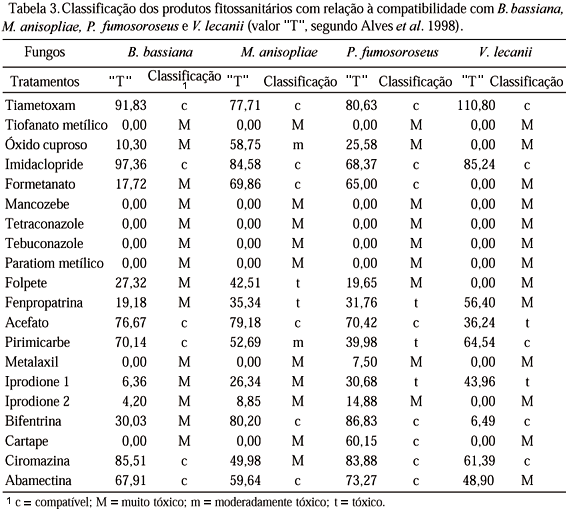The effect of eight fungicides and twelve insecticides used in lettuce and chrysanthemum crops, was evaluated on the fungi Beauveria bassiana (Bals.) Vuill., Metarhizium anisopliae (Metsch.) Sorok., Paecilomyces fumosoroseus (Wise) (Holm ex SF Gray) and Verticillium lecanii (Zimmerman) through in vitro tests. The products were added to petri dishes containing culture medium (PDA), according to the concentrations recommended for application in field. After the inoculation of the fungi, the plates were incubate at 25±1°C, 12h fotophase and 70±10% relative humidity. The mean diameter of colonies and the number of conidia produced after a variable period of incubation for each studied fungus were evaluated. The insecticides thiametoxan and imidacloprid were compatible with all the fungi studied. On the other hand, cuprous oxide, iprodione, methyl parathion, tebuconazol, metalaxil, mancozeb, folpet, fenpropathrin and tetraconazol inhibited the growth of the fungi, being classified as toxicant or very toxicant products to the entomopathogens.
Insecta; microbial control; integrated control; insecticide; fungicide



